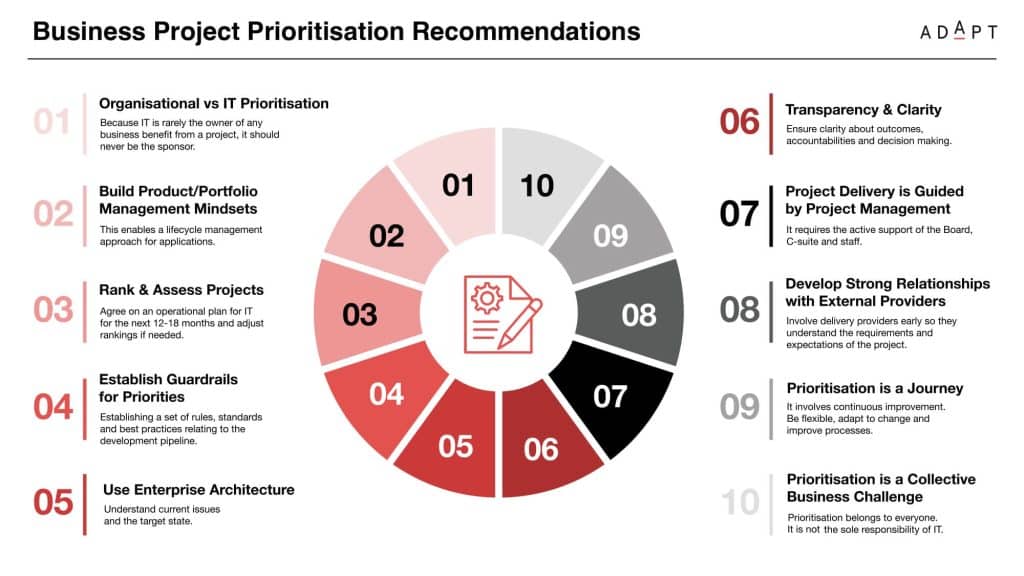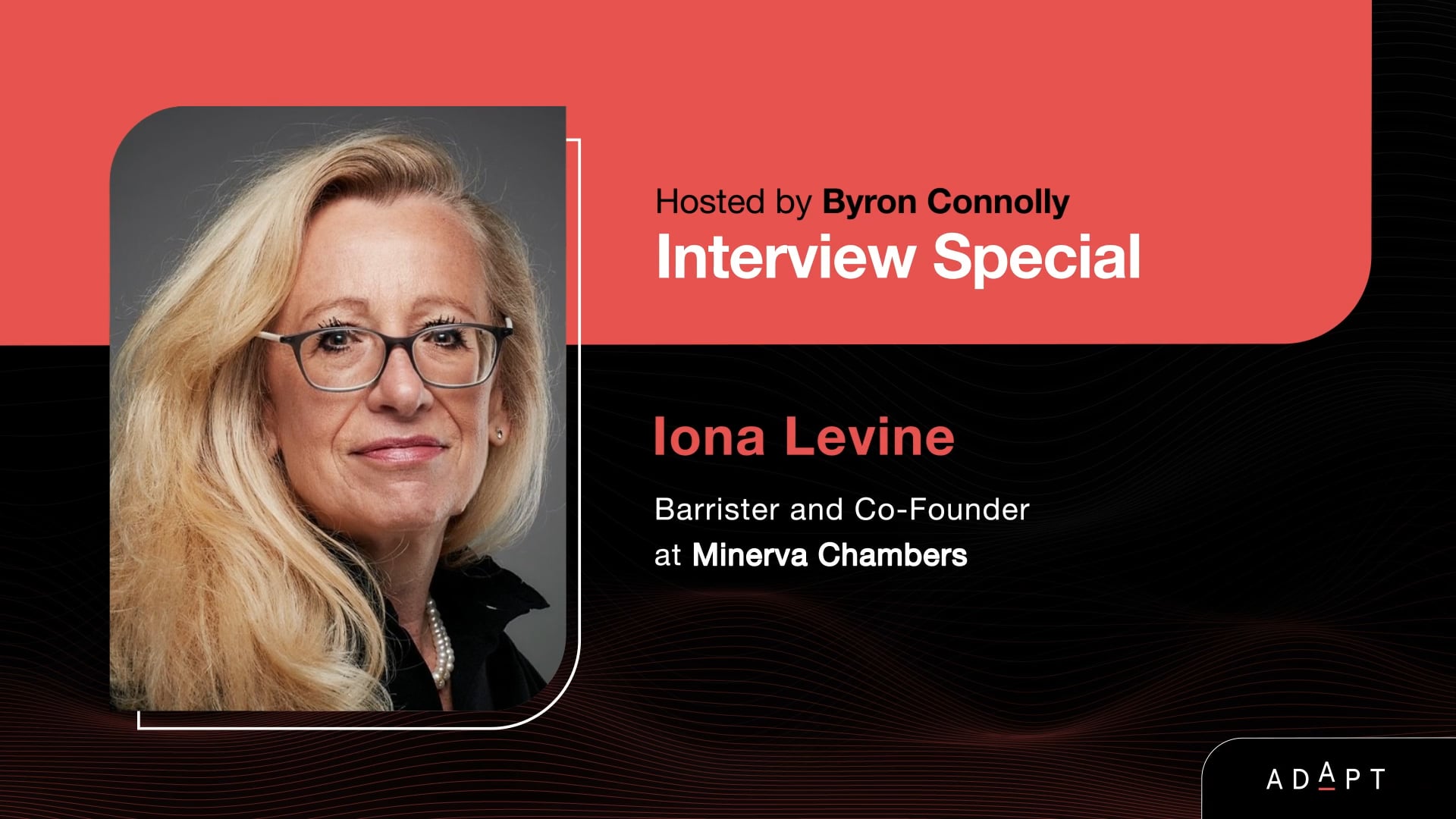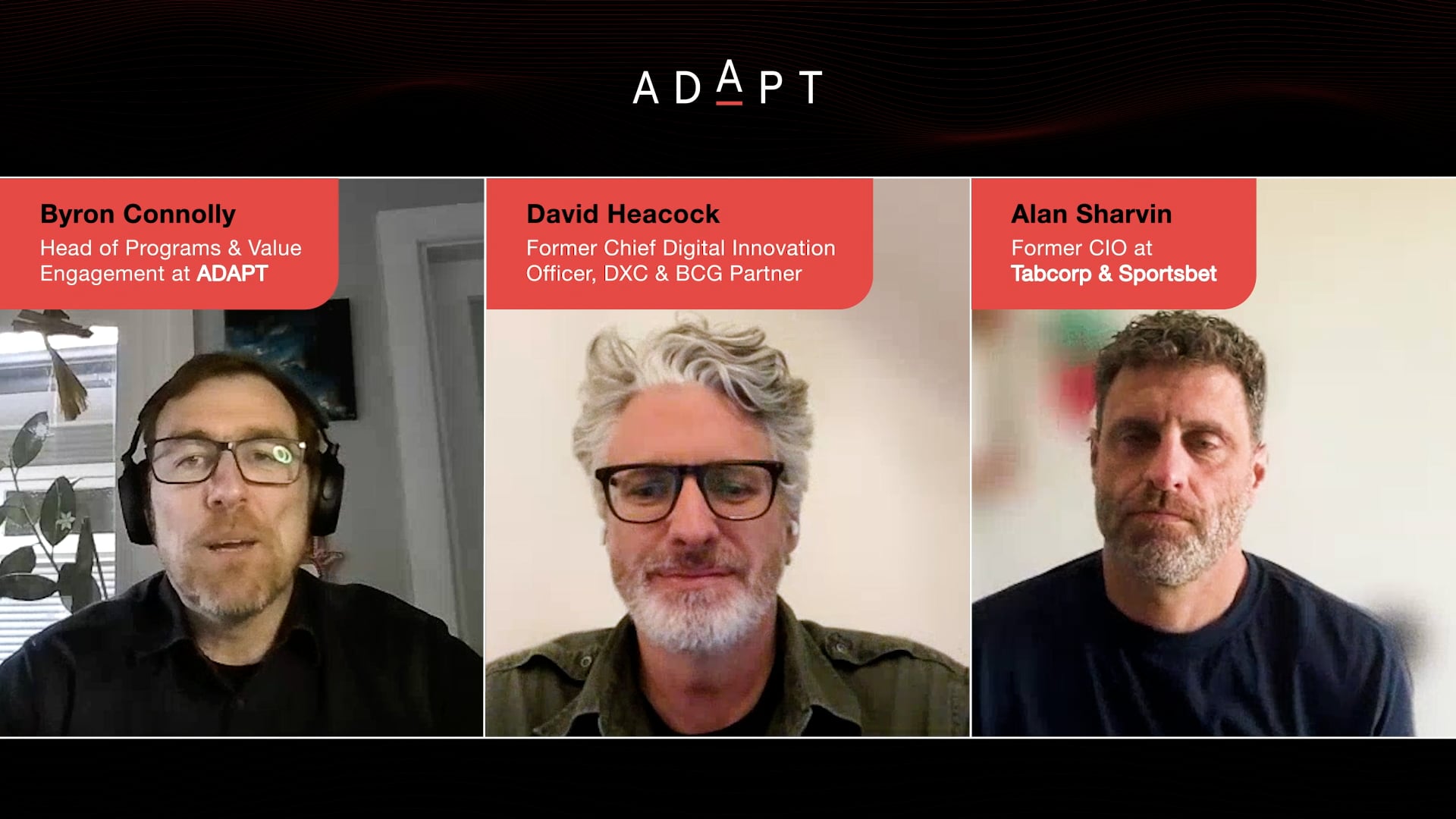Mastering IT Project Prioritisation: Insights from CIOs and Industry Experts
Chief Digital Innovation Officer David Heacock's take on Australian government programs seamlessly synchronises with McKinsey's Three Horizons Approach, covering everything from value measurement to cultural shifts.
Exploring the world of IT project prioritisation, this analysis uncovers the delicate dance between art and science, where CIOs take the lead.
UniSuper’s vision extends far beyond IT, strategically aligning with financial goals and aiming to boost online member experiences.
Chief Digital Innovation Officer David Heacock’s take on Australian government programs seamlessly synchronises with McKinsey’s Three Horizons Approach, covering everything from value measurement to cultural shifts.
The narrative touches on key themes, including visibility tools, staff navigation strategies, and the complexities of project prioritisation.
Real-world examples from a recent panel discussion featuring IT leaders Sami Yalavac and Peter Hind enrich the insights, offering practical perspectives on Agile methodologies and pragmatic IT delivery.
The resource ownership perspective adds a layer of complexity, highlighting varied approaches organisations take to allocate funds and resources for IT projects in intricate business landscapes.
ADAPT’s Research and Advisory clients can access the full report: Business Project Prioritisation: An Art or a Science?
Prioritising IT Projects and Strengthening Stakeholder Engagement: A Unified Approach
Conversations revolving around the nature of project prioritisation often centre on the debate over whether it is an art or a science.
To effectively execute tasks, IT executives engage in discussions with various stakeholders, addressing timelines, delays, and challenges.
It falls upon the Chief Information Officer (CIO) to cultivate and instil confidence within the business.
This delicate balancing act constitutes the art of project prioritisation.
The conversations are supported by a wealth of data, encompassing elements such as burn rate, comparison against other business initiatives, adherence to legislative and compliance requirements, evaluation of risk factors, and metrics reflecting customer satisfaction.
These data-driven considerations form the scientific aspect of project prioritisation
Strengthen Project Governance by Engaging Stakeholders and Adapting Resources for Success
Establishing effective governance structures is crucial for stakeholder engagement in projects.
This involves a structured and regular dialogue facilitated by a committee reviewing project submissions for merit and feasibility.
These committee meetings, typically convened every two to three months, are pivotal in evaluating projects, assigning rankings based on importance, and assessing the organisation’s capacity to execute them.
Additionally, the committee considers whether projects can be broken down into incremental stages for more manageable delivery.
The chair of the project review committee holds a key role, requiring accountability, authority, and support from business leadership.
Ensuring cross-business representation within the committee is essential, as widening its scope has shown a notable increase in positive sentiments towards IT.
Project submissions must adhere to a consistent and concise format, usually spanning one to two pages.
They should succinctly outline the project’s intention, business value, estimated cost, period, and required resources.
While providing enough information for informed decision-making, avoiding excessive detail is emphasised to prevent projects from getting bogged down in minutiae.
Once a project begins, the Project Management Office (PMO) monitors its progress.
Monthly reports featuring a Red, Amber, or green status indicator are issued to the executive sponsor.
The PMO tracks skillset allocation across projects and identifies interdependencies between them. A comprehensive, enterprise-level understanding of the IT department’s ongoing activities allows the PMO to assess capacity and advise the Project Review Committee accordingly.
In urgent cases, the PMO can initiate priority discussions with stakeholders to expedite projects or acquire additional IT resources.
A dispassionate focus on project progress is crucial, with the PMO analysing status changes and addressing concerns before they escalate.
Emphasising greater collaboration among project teams facilitates resource sharing and improves overall prioritisation tasks, as demonstrated by a respondent who enhanced prioritisation by being flexible with resources.
Strategic Synergy at UniSuper – Aligning IT Responsibilities for Collaborative Project Success
Within UniSuper’s organisational landscape, IT responsibilities often face challenges in being recognised as sponsors, a concern expressed by respondents who note a perceived disconnection from immediate project outcomes.
UniSuper addresses this by advocating for a business-led approach to bridge the gap between organisational problem statements and actionable solutions.
Respondents highlight instances where proposed business cases lacked substance, emphasising the need for IT to transcend its role as an executor of orders.
UniSuper’s approach encourages positioning IT as a strategic partner, fostering influence on executives for desired outcomes and promoting innovation.
Stakeholders, including IT, are urged to share responsibilities for specific aspects of project delivery, illustrated through one respondent’s accountability map.
Clarity in the language during the definition of responsibilities, especially in initial collaborations, is crucial.
Establishing project responsibilities early on is emphasised to prevent ambiguity at the project’s conclusion.
UniSuper suggests addressing the oversight of filling vacancies left by subject-matter experts on projects and assessing project alignment with intended business outcomes.
Additionally, there is a focus on enhancing skills capability, with immediate benefits expected post-project implementation.
This comprehensive approach ensures that UniSuper actively shapes and influences projects, fostering a more strategic and impactful role within the organisation.
UniSuper’s Vision – Transforming Retirement Experiences Through Strategic Project Prioritisation
UniSuper’s commitment to transformation is exemplified by its strategic approach to project prioritisation, extending beyond IT into various areas such as insurance changes and data lake development.
The organisation’s considerations encompass financial best interests, cost savings, risk reduction, and revenue increase. UniSuper acknowledges the ongoing challenge of modernising legacy systems, emphasising the need for efficiency in this process.
 The overarching vision includes creating a seamless online experience for members minimising communication needs while prioritising quality discussions on retirement plans.
The overarching vision includes creating a seamless online experience for members minimising communication needs while prioritising quality discussions on retirement plans.
Insights from Praveen Miranda, Head of Enterprise Delivery, underscore UniSuper’s alignment with broader industry trends in digital transformation, using UniSuper as an illustration of an organisation actively shaping and influencing projects for a future marked by strategic advancements.
Heacock’s Government Program Insights Harmonise with McKinsey’s Three Horizons Approach
Chief Digital Innovation Officer at DXC Technology, David Heacock, provides a comprehensive perspective on innovation within Australian government programs, aligning seamlessly with McKinsey’s Three Horizons Approach.
Heacock’s insights cover various critical facets, reflecting a comprehensive approach to futureproofing amid technological shifts:
Beginning with the significance of unique metrics for measuring the value of government programs, Heacock mirrors McKinsey’s Horizon One by documenting the current state.
Drawing from his experience redeveloping Australia’s passport system, he highlights substantial cost savings through streamlining the application process.
Transitioning to a system thinking approach, Heacock echoes McKinsey’s imperative to contemplate transitions from the current state (Horizon One) to the desired state (Horizon Three), exemplified by the Australian Taxation Office’s (ATO) focus on end-to-end thinking.
Advocating for a mindset shift towards ecosystems, Heacock’s perspective aligns with McKinsey’s approach to making tough decisions (Horizon Two) about projects, creating space for endeavours leading to the envisioned target state.
 Reflecting on the introduction of design thinking in government, Heacock addresses the challenge of embedding these principles into corporate decision-making processes, aligning with McKinsey’s call for envisioning the future of the business (Horizon Three) and making tough decisions.
Reflecting on the introduction of design thinking in government, Heacock addresses the challenge of embedding these principles into corporate decision-making processes, aligning with McKinsey’s call for envisioning the future of the business (Horizon Three) and making tough decisions.
Discussing the metaphorical role of the cloud as a driver of change, Heacock’s view aligns with McKinsey’s recognition of technology reshaping established business models.
Acknowledging challenges in accelerating innovation, particularly during the pandemic, Heacock notes a resistance to change in government agencies, echoing McKinsey’s recognition of the inherent difficulties in diverting attention from immediate needs.
Highlighting the cultural shift needed for innovation, Heacock emphasises a move from flashy innovation labs to creating a culture of psychological safety, bravery, and autonomy, resonating with McKinsey’s call for tough decisions (Horizon Two) in facilitating transitions towards the desired state.
Heacock correlates with McKinsey’s challenge of persuading leadership teams to formulate plans extending beyond current problems by exploring the link between media reactions and innovation culture.
Emphasising the role of metrics in driving innovation, Heacock’s stress aligns with McKinsey’s imperative of documenting the status (Horizon One) and making tough decisions about project priorities.
Finally, Heacock expresses optimism about organisations being on the tipping point for embracing innovation more fully, reflecting McKinsey’s approach to envisioning the future of the business (Horizon Three) and striving for desired goals.
Integrating Heacock’s insights with McKinsey’s Three Horizons Approach offers a comprehensive and coherent strategy for Australian government programs to navigate technological disruptions and embrace innovation proactively.
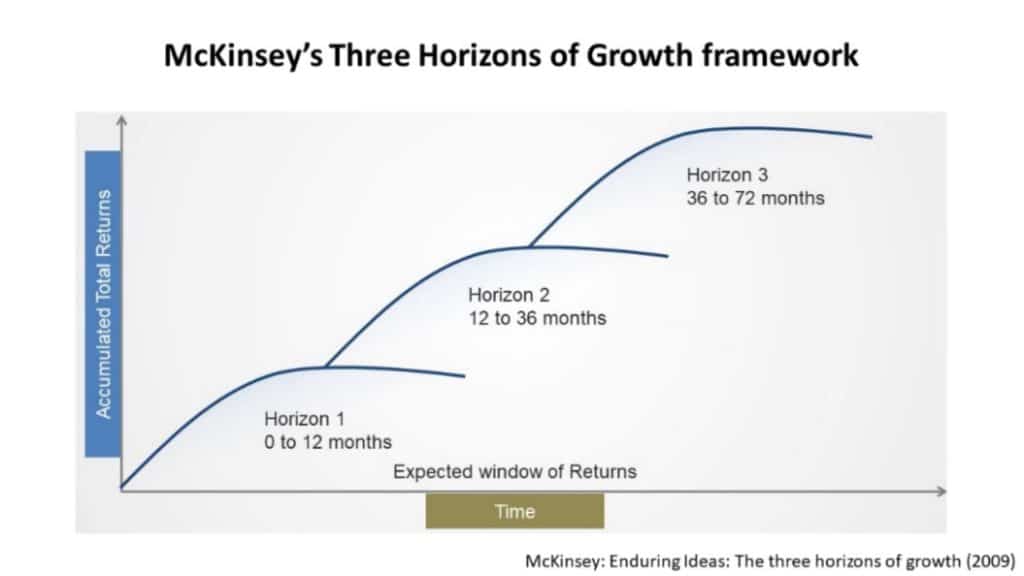
Fostering Clarity through Visual Tools and Standardised Views for Enhanced Project Visibility and Transparency
Visibility and transparency in project management were emphasised by a respondent who highlighted the advantages of visualising progress to executives in a clear and easily understandable manner, stating, “It’s very difficult to prioritise when you are just looking at much text.”
To enhance understanding and decision-making, a standardised view was recommended to encompass all project activities, along with a backlog of projects in the pipeline, allowing executives to comprehend progress, time, costs, and outcomes associated with each project.
Effective communication in reporting progress involves determining the sponsor’s preferences for progress reports and regular communication with stakeholders to align delivered outcomes with their expectations.
Various software tools were identified to provide visibility. Atlassian’s JIRA was mentioned for tracking application development progress, and one respondent used Microsoft’s PowerApp tools to create a scoreboard of project activity across different business units.
Teamwork was also highlighted as an effective tracking tool, with Smartsheet mentioned by some respondents for project tracking.
This tool facilitates the construction of easy-to-implement and follow scoreboards for executives, contributing to improved visibility and transparency in project management.
Decoding Project Significance Metrics, Categorisation, and Strategic Classification
In determining the importance of a project, the usual practice involves assigning weightings that comprise a mix of qualitative and quantitative metrics.
These metrics encompass various aspects, including the business’s strategic goals, financial returns, risk reduction, operational efficiencies, customer service or citizen benefits, ease of implementation, technical complexity, staff and funding availability, and overall value.
Despite the inherently subjective nature of using metrics for project scoring, it is a valuable tool in the prioritisation process.
Involving employees from different departments in this task is recommended to enhance transparency.
Establishing anchor points for decision-making is also a helpful strategy for resolving conflicts.
Alternatively, some respondents proposed categorising the work to provide leadership with a clear understanding of the project’s scope.
As suggested by one respondent, this categorisation could align with the four distinct types of projects outlined in Professor Eddie Obeng’s ‘The Project Leaders Secret Handbook.
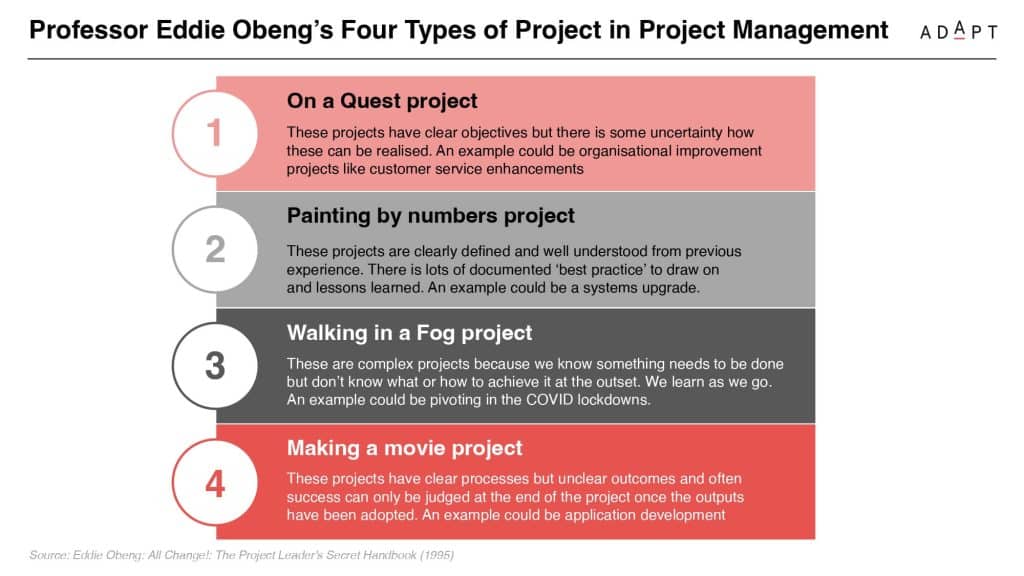
Another suggested approach was to classify the proposed investment into three categories:
- Initiatives supporting operational transformation.
- Projects categorised as Business as Usual (BAU), or activities focused on maintaining existing systems.
- Investments directed towards product innovation.
These classifications offer organisations a framework to comprehend how funding and staff resources are prioritised across various projects.
Revamp Budget Allocation, Digital Asset Management, and Promote BAU with Strategic Product Ownership
Many respondents faced challenges in allocating funds to Business as Usual (BAU) work, often overshadowed by the allure of investing in new products or transformation initiatives.
However, paying attention to BAU issues could lead to system deterioration and operational risks.
Recognising the importance of ongoing investment in core business systems, the concept of lifecycle management emerged, emphasising upgrades and maintenance.
These core systems, integral to an organisation’s marketability and intellectual property, should be treated as digital assets on the balance sheet with assigned product owners, ensuring consistent budgeting.
Implementing a product portfolio approach enables business leaders to assess priorities strategically, shifting the focus from transactional progress to desired business outcomes.
This approach represents a crucial cultural shift in digital transformation, acknowledging the need to assign business value to digital products akin to physical assets.
While easier for applications supporting specific functions, finding strong product ownership becomes challenging for back-end functionalities requiring extensive technical support and providing no immediate value, such as legacy systems support or data lake development.
Agile Prioritisation and Pragmatic Delivery Insights by Sami Yalavac and Peter Hind
In a recent panel discussion featuring IT leaders Sami Yalavac and Peter Hind, the conversation delved into a critical aspect of IT leadership—project prioritisation.
Drawing on their insights provides a tangible example of how organisations can navigate the dynamics of Agile and Waterfall methodologies, prioritise work effectively, and embrace pragmatic delivery.
Yalavac emphasised the imperative for IT leaders to position themselves as business leaders, actively participating in strategic discussions and influencing decisions from the early stages.
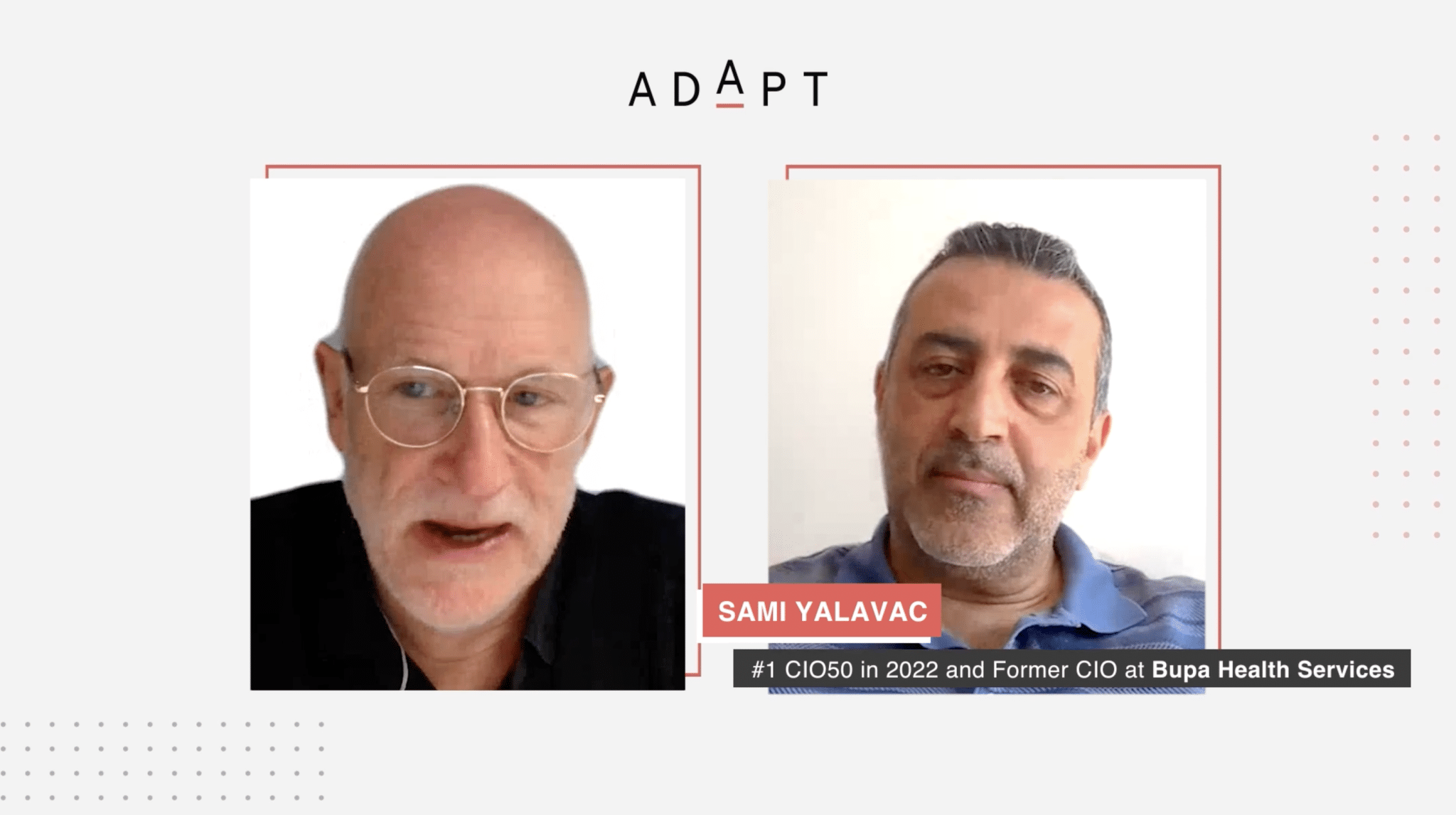 This aligns seamlessly with the Agile methodology’s iterative approach, emphasising continuous adaptation to changing priorities.
This aligns seamlessly with the Agile methodology’s iterative approach, emphasising continuous adaptation to changing priorities.
The discussion echoed the challenges in accurately predicting delivery timelines, a common concern in Agile. However, it also highlighted the need to master the art of under-promising and over-delivering, aligning with the principles of Agile.
The emphasis on adaptability aligns with Agile’s ethos for organisations adopting frameworks like the Scaled Agile Framework (SAFe). SAFe’s Weighted Shortest Job First (WSJF) technique, discussed in the panel, effectively mirrors the continuous prioritisation advocated by Yalavac.
The conversation underscored the pragmatic approach necessary for CIOs, recognising that the transition between methodologies could be more seamless.
This aligns with the advice to embrace pragmatism in choosing a delivery approach, acknowledging that Agile fosters innovation while Waterfall may be effective in predictable scenarios.
The key takeaway is the amalgamation of the strengths of each methodology, tailoring them to fit the organisation’s unique needs, driving pragmatic and successful IT delivery.
Balancing Resource Ownership in IT Project Prioritisation
In one perspective, a respondent advocated for a lean CIO budget, arguing for business units to own funds and provide resources for commissioned IT projects.
However, in a highly federated business structure, another respondent, operating with separate brands, found project prioritisation less challenging due to regulated chargeback mechanisms.
This approach involved fortnightly meetings to manage resource usage and external sourcing for project delivery, emphasising stakeholder accountabilities.

Conversely, a different respondent adopted a supply and demand model, simplifying resource allocation within business units, though challenges arose when projects intersected operational silos.
Conclusion
In conclusion, this exploration unveils the complex dynamics of IT project prioritisation, highlighting the delicate art-science balance led by CIOs.
As organisations embrace Agile methodologies, collaborative ownership, and strategic vision, IT prioritisation emerges as a critical strategic pillar.
ADAPT’s Research and Advisory clients can access the full report: Business Project Prioritisation: An Art or a Science?






















